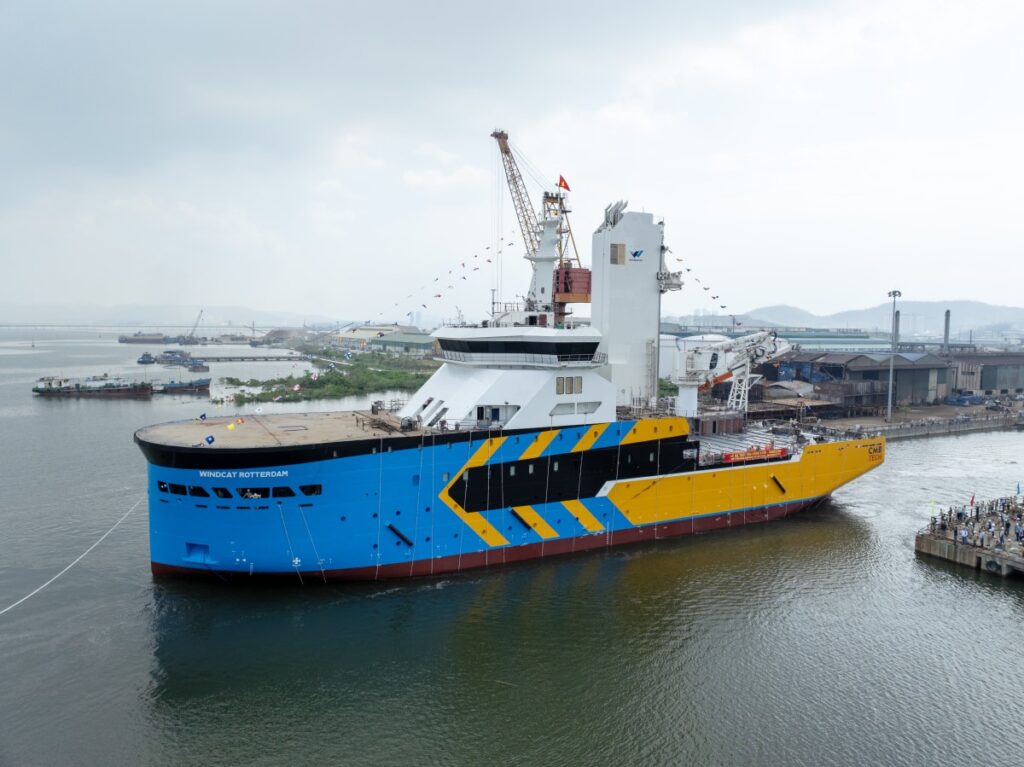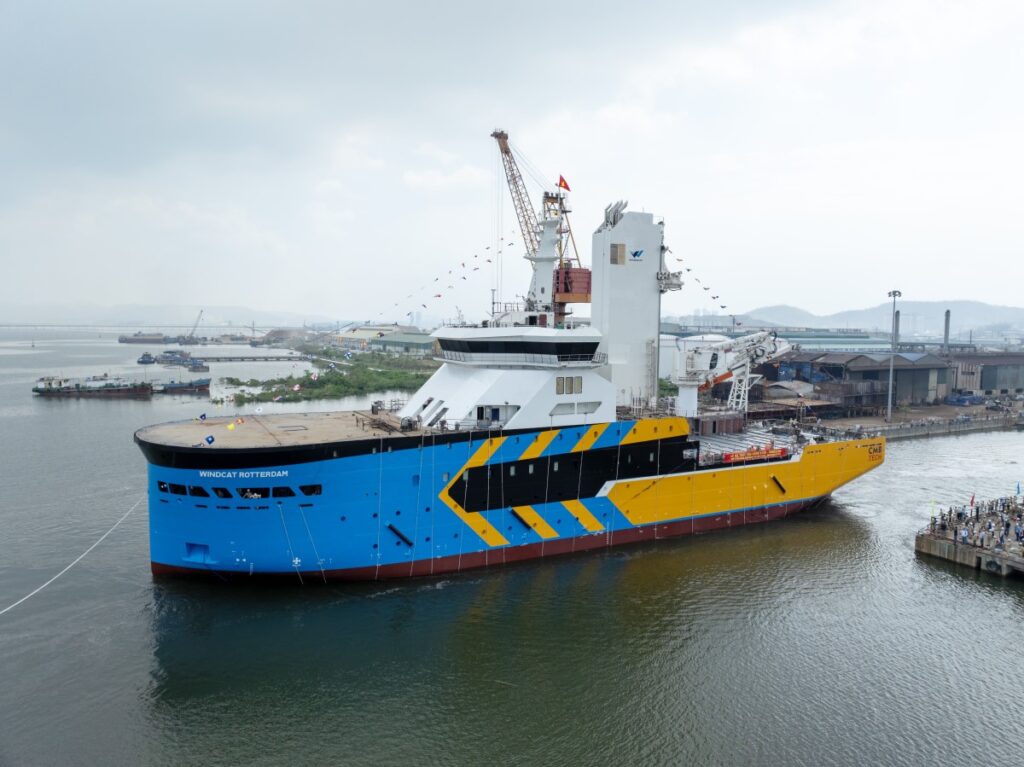Damen Shipyards has launched Windcat’s first Commissioning Service Operation Vessel (CSOV) at Ha Long Shipyard in Vietnam.

The vessel was launched on 12 October in Vietnam, where Damen is building all six CSOVs. With the first one launched, Damen proceeds with its outfitting and commissioning operations, aiming for delivery in the second quarter of 2025.
Damen, Windcat, and CMB.TECH announced plans to develop offshore wind farm support vessels in 2022. After a contract for two ships, Windcat expanded the order to six by mid-2024.
“Seeing the first CSOV glide into the water was a special moment,” said Willem van der Wel, Windcat Managing Director. “We look forward to introducing this game-changing vessel to the world next year.”
The Elevation Series CSOVs, designed by Damen with Windcat and CMB.TECH, will support offshore wind farms for up to 30 days. The 87-meter vessel can accommodate 120 people and features dual-fuel hydrogen technology to reduce CO2 emissions.
“We are proud of the efficiency gains this vessel will deliver,” said Joost van der Weiden, Damen Sales Manager Benelux. “The hybrid-electric propulsion system and efficient power distribution eliminate the need for a backup diesel generator.”
Innovations such as optimized thruster configuration enhance dynamic positioning during transfers, significantly cutting fuel consumption and emissions.
Follow offshoreWIND.biz on:
Original Story at www.offshorewind.biz
